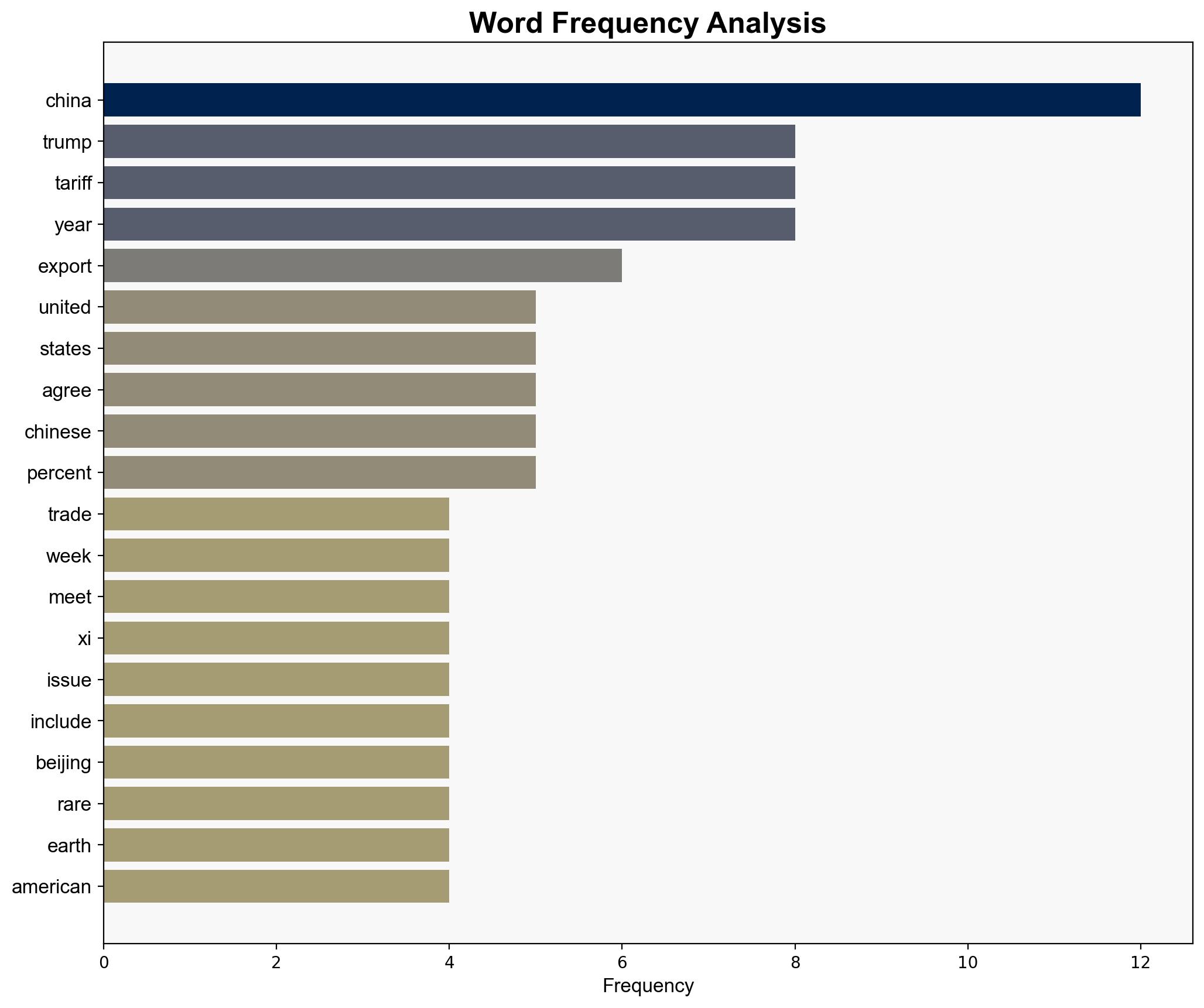Where things stand on China-US trade after Trump and Xi talk – Digital Journal
Published on: 2025-11-05
Intelligence Report: Where things stand on China-US trade after Trump and Xi talk – Digital Journal
1. BLUF (Bottom Line Up Front)
The recent discussions between Donald Trump and Xi Jinping signal a potential de-escalation in the China-US trade tensions, with both sides agreeing to tariff reductions and rare earth export licenses. However, underlying structural issues remain unresolved, suggesting that tensions could resurface. The most supported hypothesis is that these agreements are temporary measures to stabilize economic relations rather than a long-term resolution. Confidence level: Moderate. Recommended action: Monitor compliance with agreements and prepare for potential re-escalation.
2. Competing Hypotheses
1. **Temporary Stabilization Hypothesis**: The agreements between Trump and Xi are short-term measures aimed at stabilizing economic relations without addressing deeper structural issues. This hypothesis is supported by the maintenance of strategic tariffs and the lack of resolution on intellectual property and technology transfer concerns.
2. **Long-term Resolution Hypothesis**: The agreements mark the beginning of a long-term resolution to trade tensions, with both sides committed to addressing underlying issues over time. This is less supported due to the absence of concrete steps to tackle core disagreements and the continuation of export controls and national security concerns.
3. Key Assumptions and Red Flags
– **Assumptions**: The Temporary Stabilization Hypothesis assumes that both countries are primarily motivated by immediate economic stabilization rather than long-term solutions. The Long-term Resolution Hypothesis assumes a genuine commitment to resolving deeper issues.
– **Red Flags**: The lack of detailed plans for addressing intellectual property theft and technology transfer. The continuation of export controls and national security concerns suggests unresolved tensions.
– **Blind Spots**: Potential influence of domestic political pressures on both sides, which may not be fully accounted for in the agreements.
4. Implications and Strategic Risks
The temporary reduction in tariffs could lead to short-term economic benefits, but unresolved structural issues pose risks of future escalation. The continuation of export controls and national security concerns could lead to increased geopolitical tensions and economic decoupling. The potential for cyber and technological conflicts remains high, with implications for global supply chains and economic stability.
5. Recommendations and Outlook
- Monitor compliance with tariff reductions and rare earth export agreements to assess the sincerity of commitments.
- Engage in diplomatic efforts to address unresolved structural issues, particularly intellectual property and technology transfer.
- Prepare contingency plans for potential re-escalation of trade tensions, including diversification of supply chains.
- Scenario-based projections:
- Best Case: Continued de-escalation and gradual resolution of structural issues.
- Worst Case: Breakdown of agreements leading to renewed trade war and economic decoupling.
- Most Likely: Temporary stabilization with periodic tensions and unresolved core issues.
6. Key Individuals and Entities
– Donald Trump
– Xi Jinping
– Wendy Cutler (Asia Society Policy Institute)
– ByteDance (parent company of TikTok)
7. Thematic Tags
national security threats, cybersecurity, economic stability, geopolitical tensions, trade negotiations




